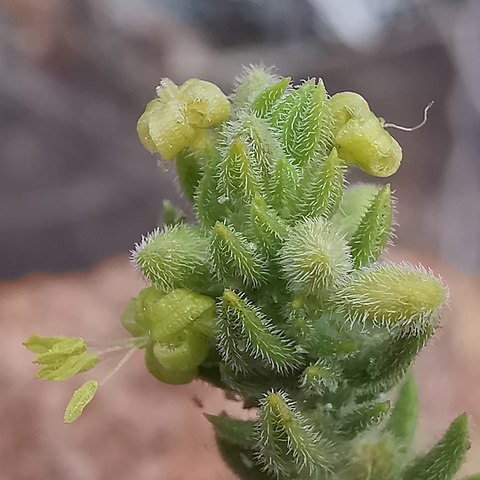Leaves decussate or occasionally in whorls of 3 (rarely 4), often seemingly in much larger numbers at nodes, blades ± broad and large to ± ericoid and small, mostly narrowed to base, acute to acuminate (seldom ± mucronate or ± obtuse) at apex, shortly petiolate to sessile, with ± cup-shaped stipular sheaths bearing one to many setae or fimbriae on either side.
Fruit crowned by persistent calyx lobes, supported by a ± U-shaped carpophore (cf. TAB. 34, figs. B5 and D3.), dehiscing into two mericarps, each convex on dorsal side, plane to concave or sometimes hollowed out and with a prominent to inconspicuous median longitudinal ridge on ventral side.
Ovary bicarpellate and biovulate [in 2 SW. Cape species one carpel reduced]; style 0 or very short; stigmas 2 [only in one SW. Cape species 1] long exserted, hairy, greyish to greenish white, seldom purplish red.
Inflorescence frequently leafy and inconspicuous, made up of mostly subsessile, many-to very few-flowered cymes, in dioecious taxa often sexually dimorphic (female inflorescence contracted, ± cylinder-like).
Hermaphrodite, male: corolla tube ± cylindrical, broadly funnel-shaped to subcampanulate, lobes recurved, ± lanceolate; anthers yellowish to whitish, exserted, dangling on long slender filiform filaments.
Flowers mostly subsessile, subtended by a pair of leafy bracts, male, hermaphrodite or female, 4–5-merous.
Female: corolla much smaller; tube cylindrical, lobes mostly erect, linear to ± lanceolate.
Large shrubs, dwarf shrubs, short-lived subshrubs or perennial herbs.
Calyx: lobes large, conspicuous to small, indistinct or ± lacking.

